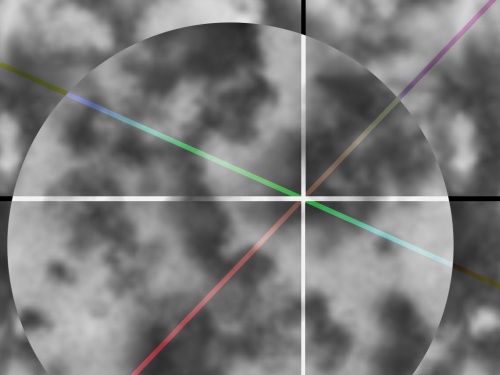An Interview with Will Gompertz: Modern Art in 3,600 Seconds
Will Gompertz talks to associate curator Deborah Herring about his recent show Modern Art in 3,600 Seconds.
Deborah Herring: Is this a lecture, a performance or a stand up show?
Will Gompertz: All three - it is a lecture encased in a performance, wrapped around in a bit of stand up, a bit of chat show and a bit of audience participation. It is an entertainment first and foremost, with some information buried deep within it. It is a pill which has been heavily sugared.
DH: How are you going to fit 100 years into 3600 seconds?
WG: You don’t of course, but you can play with it. The reason for the title was because it references the ICA’s first ever show.
DH: Where do you start and finish in the history of art?
WG: I start with Constable’s The Hay Wain, which was shown at the Paris Salon in 1824 and was seen by Delacroix (and also by Charles X, who gave it a Gold medal). Delacroix responded dramatically by starting to paint in a much looser fashion with heightened colours of pure pigment. This was totally against what had gone before at the academy, which was all about the grand manor, the gradual tonal changes and the very rigorous and laborious brushstrokes. It is, I think, the moment that modern art as we know it started. And I end with today, with Ai WeiWei, with Damien Hirst, with Tracey Emin and with Jeff Koons. What’s interesting about the story, is that it connects directly back to that moment, to that idea of bringing the everyday into Fine Art.
DH: What was your criteria and reasoning for whom to include in terms of artists?
WG: That’s a great question, yet really difficult. I mean there are loads of artists that are not in there such as Richter and Lucien Freud. The criteria was based around the art movements, the ‘isms’ as they’re called. Once those were established it really becomes about who established that movement and who were the key artists to it, and then onwards. So for example, the reason that Richter and Freud are not in there is because they are artists working within the ‘ism’ I suppose, of expressionism, and I deal with expressionism through Van Gogh and The Starry Night, and the moment that he addresses a subject not just by wanting to depict it, but by trying to depict how he felt about it. And that is expressionism as we know it. I mention Francis Bacon following that line, but I don’t include everybody, and then expressionism moves onto Germany, Munich, the Blue Rider Group, and German expressionism.
DH: What about artists who sit outside those ‘isms’?
WG: Well I didn’t get the chance to go too deep as it’s a commercial book for those millions of people who are quite new to modern art, and don’t know the rules, and don’t know the back story. It’s a book for them, it’s not a book that is breaking new ground but instead it’s telling an old story to a new audience.
DH: Is there anything or anyone you’d like to fit in but couldn’t?
WG: I would have liked to have done more on Constable and I would have liked to have written in more detail about some of the more modern artists. I would have liked to have focused more on China and I would have liked to have covered the emerging market and what’s going on. To be honest though, that would have required a huge amount of additional research, because it’s not really been done curatorially, and there’s a whole Edward Said argument about whether or not artists all over the world are producing work for the existing market or whether they have got something really new and urgent to say. And I can’t answer that. It would have to be a different book.
DH: Which artist has had the most influence in the past 100 years?
WG: For me, Cézanne.
DH: Which artist do you think is the most underrated?
WG: Within the art world I don’t necessarily think this artist is underrated at all, but as far as public consciousness is concerned, I think Rauschenberg is underappreciated. There aren’t enough shows of his work. What he was doing from Black Mountain [college] onwards was a really brave investigation into what is art, and what is the role of the artist, right from his erased De Kooning to his Monogram Combine. He was a brilliant artist who was obviously coming from the role of Duchamp, but more importantly, was challenging the conventions of abstract expressionism in America, and the hugely macho world in which American art had created for itself. Rauschenberg came out of that with something very new and something very fresh, which subsequently led to not only Pop Art, but also much more than that such as, what we see with the YBAs and the Ai Weiweis of the world. Quite simply, Rauschenberg was a very important artist and there are not enough shows of his in the world.
DH: Who’s your personal favourite?
WG: Cézanne.
DH: So why is Tracey’s unmade bed art?
WG: Because she has asked it to be judged as such. And secondly, because she has taken an object and changed its context in order to proclaim it as a work of art. She’s had the idea and she has made the bed the medium of her idea. You have to explore the unmade bed and the ideas in it, to decide whether or not you think that it is a good or a bad work or art. But the fact that she has announced it as a work or art, and the fact she’s changed its context, then I think we need to judge it as such. ■
Will Gompertz is the BBC Arts Editor and previously was a Director at Tate for seven years. He is one of the world's leading art journalists and has interviewed the finest contemporary artists and curators including Damien Hirst, Ai Weiwei, Yoko Ono, David Hockney and Tracey Emin.
This article is posted in: Blog, Events
Tagged with: Comedy, interview, Performance, Talks, Will Gompertz





